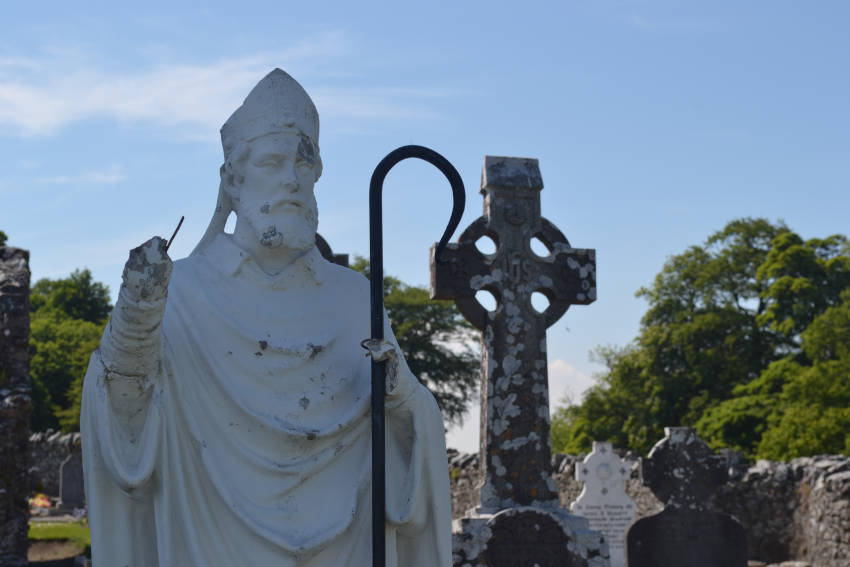 |
| Statue of Saint Patrick on the Hill of Slane, Ireland |
There are many myths and legends surrounding Saint Patrick, along with a great deal of mystery. How much do you think you know about this patron saint of Ireland?
What is the significance of March?
While some people mistakenly think that it was his birthday, March 17th is the day that Saint Patrick died. This day never changes for the celebration of the life of one of Ireland's patron saints. The Saint Patrick's Day Festival has increased to encompass a few days of celebrations in Dublin and now across the world there are often festivities spanning a full week in major cities around the world. March 17th, 461 is believed to be the day of Saint Patrick's death.
Was Saint Patrick poor or powerful?
The answer is actually both. Saint Patrick was actually a bishop. He was born in Britain during the Roman period and was however then taken to Ireland to become a slave against his will. After he was freed, he became a priest and was later made the first bishop of Ireland and is said to be responsible for bringing Christianity to Ireland and had a lot of influence. What was once a religious event has now become a cultural celebration.
What's the story with the shamrock?
It's extraordinary how famous the humble shamrock has become worldwide and it's an instant symbol now of Ireland and all things Irish including Saint Patrick. It's a type of clover and the three leaves are said to stand for faith, hope and love. It's said that Saint Patrick used it as a symbol to explain the holy trinity. It is also said to be extremely lucky if you find one with four leaves!
Why should you wear green?
Green is a color associated with Ireland but it's not actually the official color of the country. Blue is the official color of Ireland but it's well known that you should always wear green on Saint Patrick's Day. It's believed that if you do then you'll be invisible to leprechauns! If you aren't wearing green then a leprechaun will see you and pinch you! That is why it has become a tradition to pinch anyone who isn't wearing the color green!
Was Saint Patrick Irish?
It might seem like a tall tale and difficult to believe, but the patron saint of Ireland was not actually Irish! Saint Patrick was actually born in Britain and it is said that he didn't set foot in Ireland until he was 16 years old. Theories abound as to where he was actually born and there are many different opinions. Some historians believe that he was born in southern Scotland, others argue that he originated from Wales or even Cumbria.
What's in a name?
It's extraordinary to think but it's said that Patrick's birth name wasn't Patrick! It was in fact Maewyn Succat! Patrick or Patricus is the name that would have appeared and that he chose when he was carrying out his religious work following his ordination. The definition of the name Patricus in Latin is actually 'nobleman' but it could also be interpreted as 'father figure' which is how he was viewed especially for his religious work in Ireland.
Was the first Saint Patrick's Day parade in Ireland?
It's not widely known, but the first Saint Patrick's Day parade was actually held in the USA as far back as 1601 in a Spanish colony in the United States. The first official celebration in Ireland is recorded as being in 1631 but the USA parade was 30 years before that! The first Saint Patrick's Day parade in New York was on March 17th 1762. This was 14 years before the American colonies claimed independence from Britain. The oldest and largest parade in the world is in New York City with over two million people turning out annually to celebrate Saint Patrick and all things Irish.
Snakes? Fact or Fiction?
One of the best known stories associated with Saint Patrick is how he banished all snakes from Ireland. This story goes back centuries and it was actually first mentioned in print by Gerald of Wales in Topographia Hiberniae. It was said that he stood atop an Irish hillside and banished snakes from Ireland which prompted the serpents to slither away off into the sea. The real story, however is that snakes never occupied Ireland as there are no signs of any snakes in the country's fossil record.
Happy St. Patrick's Day!